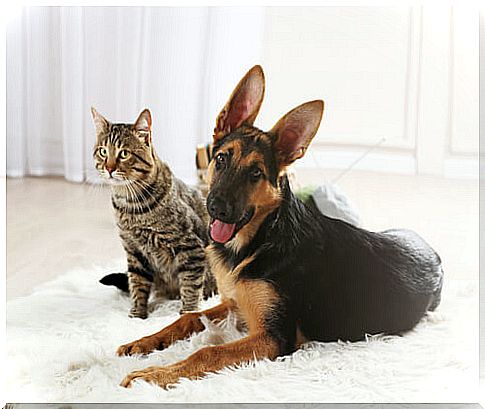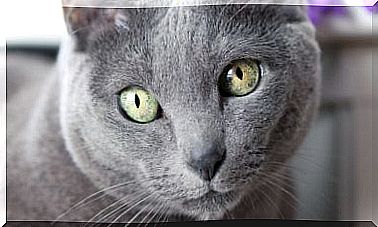Is It True That Cats Are Smarter Than Dogs?

There has always been this discussion: who is smarter? The pussycat or the dog? Of course, the lovers of each pet speak in favor of those who prefer … And even the scientists are in charge of determining which is the winner of the contest. In this article we will try to reach a conclusion about it. Are cats smarter ?
Proof that cats are smarter? Or the dogs?

Those who adore felines say that it is an animal superior to the rest. On the other hand, dog lovers affirm that it is the being with the most learning abilities and intelligence. While cats are more independent and self-sufficient, dogs are more willing to learn new tricks.
The Cancog Technologies Institute located in Toronto, Canada, has conducted a study to show who is smarter. The result is that cats make more mistakes and dogs can learn more tasks. In the memory area, the first can remember 2 items and the last 3.
The brain of dogs is larger due to a question of proportions, and therefore it is not a factor that determines intelligence. The number of neurons present can help us determine who has more intelligence: cats have 300 million and dogs 160 million.
To continue the research, we must say, for example, that social animals tend to be more intelligent because they must solve problems related to communication and coexistence. At this point the dogs are clear winners.
But there is even more: when pets live with people, new demands are created. Dogs can respond better to them and are better able to follow commands. Meanwhile, cats demand attention with their meows.
Are cats smarter than dogs, or different for comparison?
Although in some subjects felines appear to be more intelligent than canines, accurate comparisons cannot be made, since they are two different species. In each category there is a winner:
1. Brain (neurons)
In this sense, cats are smarter. They have almost twice as many neurons as the dog.
2. Domestication
The dog. Comparative DNA studies between the dog and the wolf indicate that domestication began 16,000 years ago. In the case of cats, they entered homes 9,500 years ago.
3. Affective ties
The dog. The bond between the dog and its owner can be as close as that of a father and son. Dogs are group animals and their instincts lead them to affiliate. Cat owners know that their pets like to have their space and their independence since they are a lonely being.
4. Popularity
The cat. This is actually debatable, but it is measured in relation to how many people have cats and how many dogs. In today’s city life, more and more people choose to have a cat at home because they are easier to keep.
5. Understanding
The dog. It has the ability to look its owner in the eye and understand certain gestures. They also know about the emotions of their owners just by observing them.
6. Troubleshooting
The dog. It is able to follow human tracks, find something that is pointed at with a finger, or look for an object that has been thrown at it.
7. Vocalization

The cat. Although dogs have more vocal flexibility, cats are better able to generate “tones”, be more subtle and achieve what they want when trying to communicate. It is not the same a meow because he is hungry, another because he wants to play, and a third when he is angry.
8. Adaptability
The dog. It is said that the dog belongs to the people and the cat to the houses. That is why when we move it is easier for a dog to adapt. The same does not happen with a cat.
9. Supersenses
The cat. His whiskers, nose and ears allow him to capture everything that happens around him. It is even believed that they can detect the spirits and energies of people.
10. Greener
The cat. For being more hygienic and careful with their waste, cats win in this category.
11. Utility
The dog. Canines are used to care for the home, protect livestock, hunt and even as a babysitter. Cats usually have no “jobs” other than eliminating mice.









